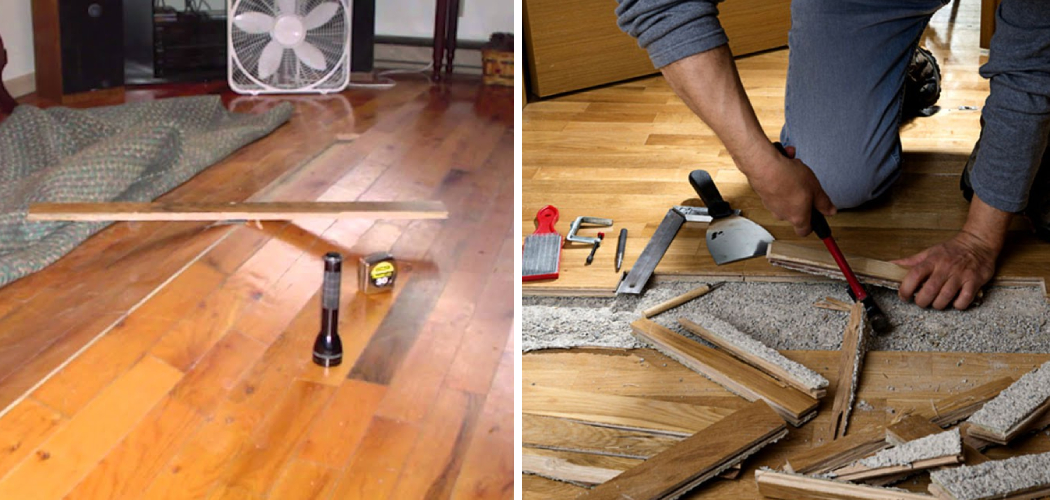Have you ever noticed that some of the hardwood floors in your home have started to buckle? If so, then there is no need to worry – there are a few simple solutions that can repair those buckled sections and restore your beautiful floor.
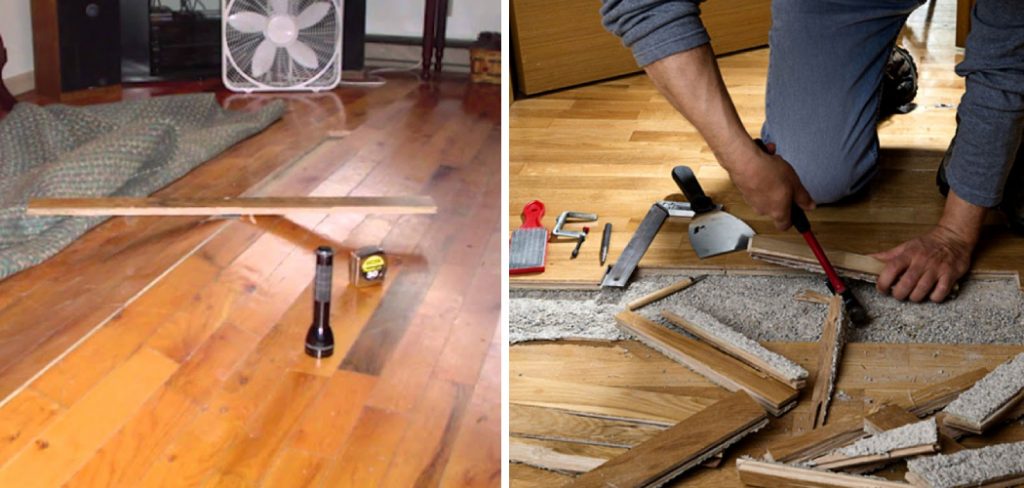
This blog post will provide an overview of how to repair buckled hardwood floors. We’ll discuss what causes boards to buckle, as well as the techniques used for repairing any affected areas. So if you want to get your wood floors looking like new again, read ahead!
Buckling can be the result of water damage, an uneven subfloor, or even just from normal aging. Whatever the cause of your buckled flooring, it’s important that you take action quickly!
Knowing how to repair buckled hardwood floors not only protects the aesthetic value of your home but it also offers greater security too; improper repairs may lead to unsteady floors which could pose a safety hazard. In this blog post, we will cover all of the steps needed to restore your old wooden slats back to their former glory in no time at all.
What Causes Buckled Hardwood Floors?
1. Moisture and Swells
One of the most common causes of hardwood floor buckling is excessive moisture. This can be caused by flooding or a slow accumulation of water seeping up from the concrete subfloor. Moisture can cause the wood to expand and swell, pushing out against the boards that contain it and causing them to buckle up.
2. Improper Installation
Another potential cause of buckled hardwood floors is improper installation. Improperly installed floors can cause buckling when the subfloor isn’t level, or when the floor was laid too tightly, not allowing for natural expansion and contraction of the wood. This type of buckling usually happens near walls or corners where there may be more movement in the floorboard due to its tighter fit.
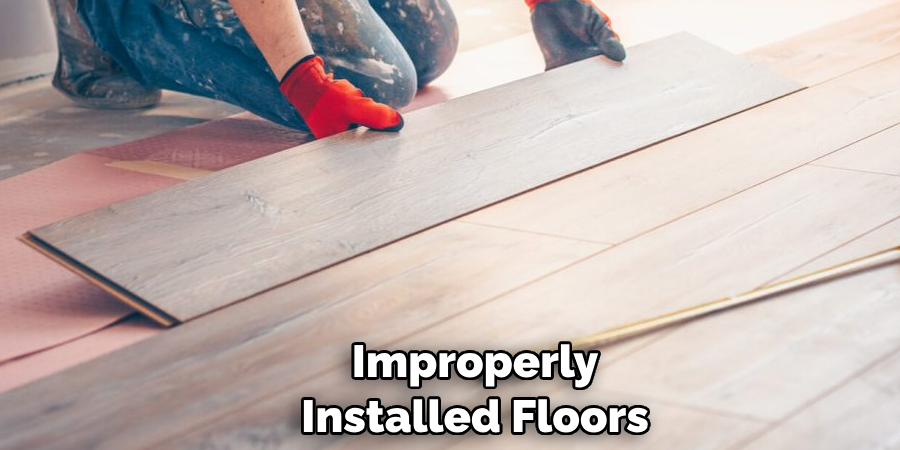
3. Heat and Humidity
Finally, buckling can be caused by large swings in heat or humidity. When temperatures rise, wood expands; when they drop again, it contracts. If the boards were installed too tightly, this expansion and contraction can cause them to buckle up as well.
Fortunately, there are a few ways to repair buckled hardwood floors and get your floors looking like new again. Keep reading to find out how you can fix buckled hardwood floors and what steps you should take to prevent them from happening in the future.
How to Repair Buckled Hardwood Floors in 6 Easy Steps
Step 1: Remove All Furniture and Other Items From the Room
The very first step is to remove all furniture and other items from the room. This includes any rugs or floor mats that may be in place. Also, you have to make sure that all nails, staples and other objects are removed from the floor.
Step 2: Prepare the Floor
Once you have cleared the room of furniture and objects, you can begin to prepare the floor for repair. Start by removing any loose boards from the area with buckling. If needed, use a crowbar or flat pry bar to help remove them. After the loose floorboards have been removed, use a hammer and chisel to level out any raised portions of the floor.
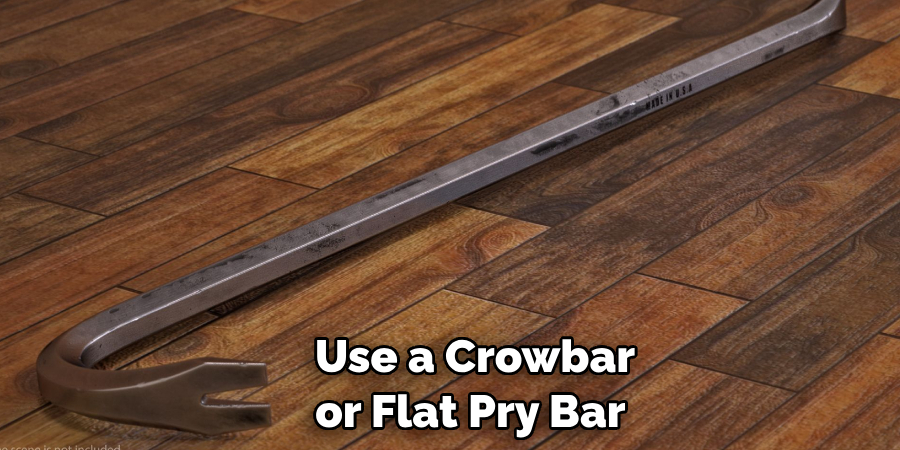
Step 3: Nail Down Buckled Areas
Once the area is prepped and ready for repair, start by nailing down the buckled areas with finishing nails. Make sure that you drive in the nails at an angle so they will hold firmly. If you have the right tools, you can also use a pneumatic flooring nailer for this job.
Step 4: Check the Subfloor
Before going further with your repair job, inspect the subfloor underneath for any signs of water damage or rot. If needed, replace any damaged pieces and make sure to fill in any holes with wood putty or wood filler.
Step 5: Apply Floor Leveler
Once the subfloor has been inspected and repaired, you can apply a self-leveling compound to the buckled areas of the floor. This will help fill in any gaps and create an even surface for your hardwood floors. After the leveler is applied, give it time to dry completely before moving on to the next step. After the leveler has dried, sand down any high spots and fill in any low spots with wood putty or filler.
Step 6: Refinish Your Hardwood Floor
Once all of the repairs are complete, you can apply a fresh coat of finish to your hardwood floor. This will help protect the surface from further damage and give it a beautiful new shine. For the best results, make sure to use a high-quality finish that is designed specifically for hardwood floors.
Following these steps will help you successfully repair your buckled hardwood floors and get them looking like new again. Just be sure to take the time and patience necessary for this type of job so that it’s done properly.
Some Extra Tips to Repair Buckled Hardwood Floors
1. Use a Moisture Meter
This is the most important tool for fixing buckled wood floors. A moisture meter can help you identify any areas that may be too wet or dry, which is often the cause of buckling and warping.
Also, ensure that any exposed areas of your floor have a relative humidity level between 30 and 50%.
2. Fill the Gap with Resin
If there is a gap between the boards, fill it with a resin filler. This will make sure that moisture cannot seep through and cause more buckling and warping in the future. Also, make sure to sand the area smoothly with a belt sander before applying the resin.
3. Use Wood Screws
For large cracks or gaping holes, use wood screws to hold the boards together and help prevent future buckling. Make sure to use a drill bit that is slightly larger than the screw so that it can go through both pieces of wood without splitting them apart. Also, predrill the holes and countersink the screws to ensure a smooth finish.
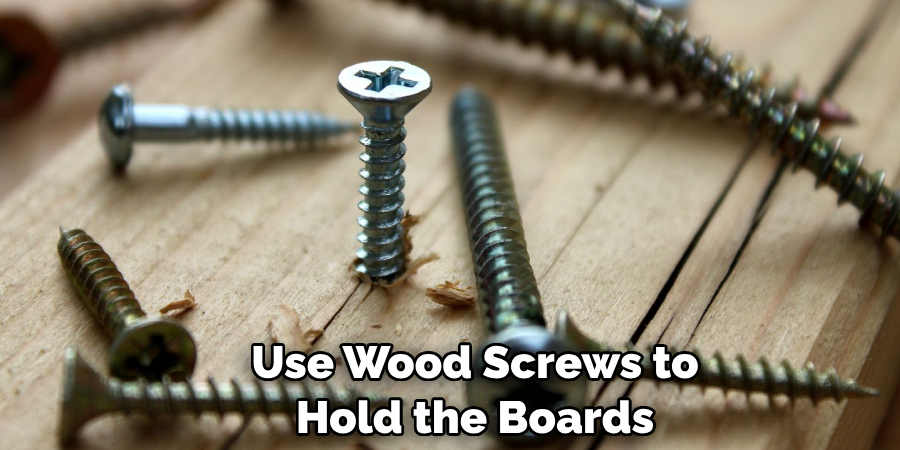
4. Remove Excess Moisture
If the wood flooring is exposed to moisture due to flooding or plumbing leaks, it’s important to try and remove as much of the water as possible. Use a wet/dry vacuum and mop up any standing water. Use fans to help the area dry quickly and then seal the wood with a waterproof sealer.
5. Call in Professionals
If you’re unable to repair the buckling hardwood floors yourself, it’s best to call in professionals who specialize in flooring repairs. They can properly assess the situation and take the necessary steps to restore your floor to its original condition. Have them fix the buckling and take measures to prevent it from happening again in the future.
By following these steps, you’ll be able to repair your buckled hardwood floors without too much hassle. Just make sure that you use the right tools and take all necessary precautions when dealing with moisture or gaps in between the boards.
Frequently Asked Questions
What Precautions Should I Take Before Starting?
When working on buckled hardwood floors, it is always best to take some precautions before starting. Make sure you wear protective clothing and goggles to protect your eyes from splinters and debris. Additionally, it’s important to ensure the area is well-ventilated and that all carpets or rugs in the room are cleared away so as not to get in the way.
How Can I Tell If My Hardwood Floors Are Buckled?
The tell-tale signs of buckled hardwood floors include warped boards, sections that are higher than others, and an overall uneven texture across the floor. Additionally, you may notice creaks or squeaking when walking on certain parts of the floor – this is a sure sign that the wood has become damaged and needs to be repaired.
What Are Some Methods Of Repairing Buckled Hardwood Floors?
There are several methods for repairing buckled hardwood floors, depending on the severity of the damage. The most common fix is to sand down the affected areas until the floor is level again. If this doesn’t work, a professional may need to be called in to replace the warped boards. Additionally, some homeowners opt for installing new flooring over the damaged section, such as carpet or tile. This is usually cheaper and faster than completely replacing the hardwood floors.
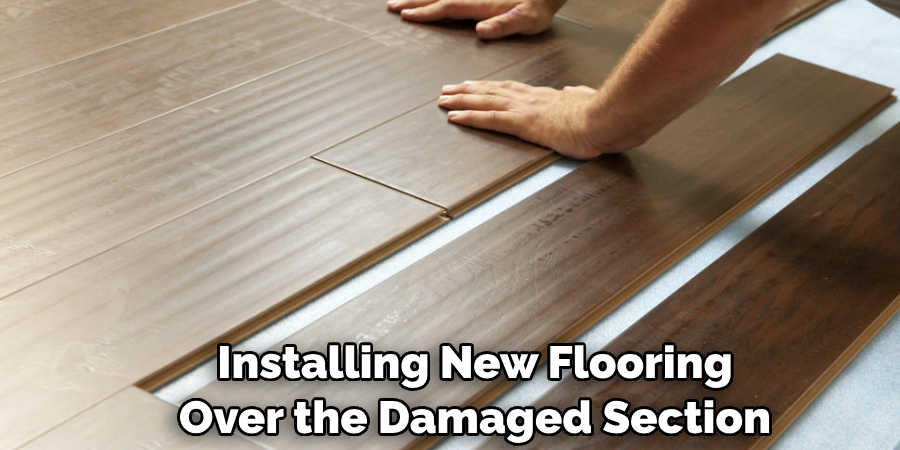
What Should I Do After Repairing My Hardwood Floors?
Once you’ve repaired your buckled hardwood floors, it’s important to take steps to prevent further damage. Have the floor professionally sealed and waxed to protect it from moisture and dirt.
Additionally, ensure that you use area rugs or mats in high-traffic areas to absorb any shock or wear on the hardwood floors. Lastly, make sure your HVAC system is regularly maintained and serviced – this will help to ensure the humidity in your home is regulated and won’t cause further buckling of the wood.
By following these steps, you can keep your hardwood floors looking beautiful for years to come. With proper care and maintenance, you’ll be able to enjoy the aesthetic and practical benefits of a well-maintained hardwood floor.
Conclusion
In the end, repairing buckled hardwood floors isn’t as difficult or intimidating as you might think. You just need to make sure you follow all the precautions and steps mentioned in this article carefully.
If you put in the effort and take your time, you’ll be able to successfully repair your buckled hardwood floors without too much hassle. As long as you pay attention while going through each step, don’t rush anything, and ensure everything is securely in place when finished – you shouldn’t have any problems with the repair.
Furthermore, if you ever find yourself in a jam during the repair process – don’t hesitate to contact a professional for further assistance. After all, there’s no shame in finding help for something like this when particular issues can arise! Fortunately, we’ve been provided with a comprehensive guide on exactly how to repair buckled hardwood floors effectively; all that’s left now is to get started and watch our newly repaired floors come back to life once again!
You Can Check It Out to Turn a Den into a Bedroom

